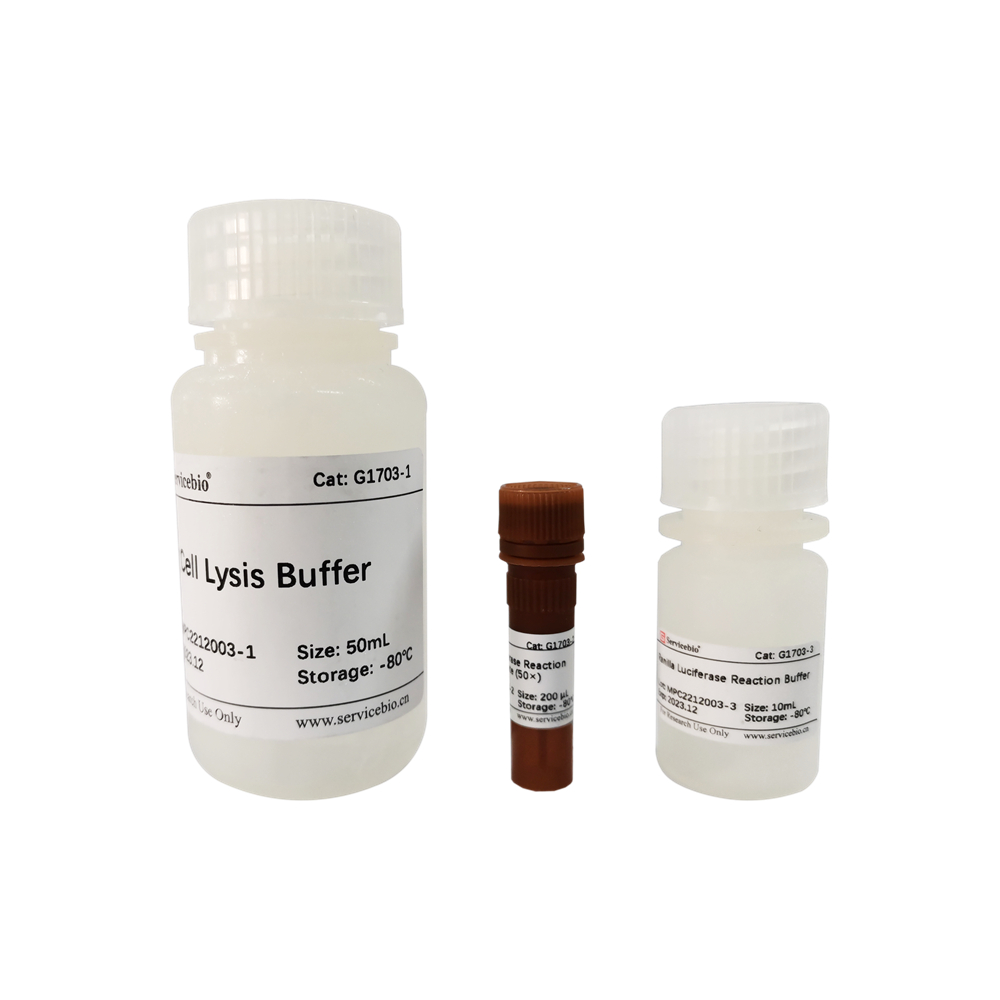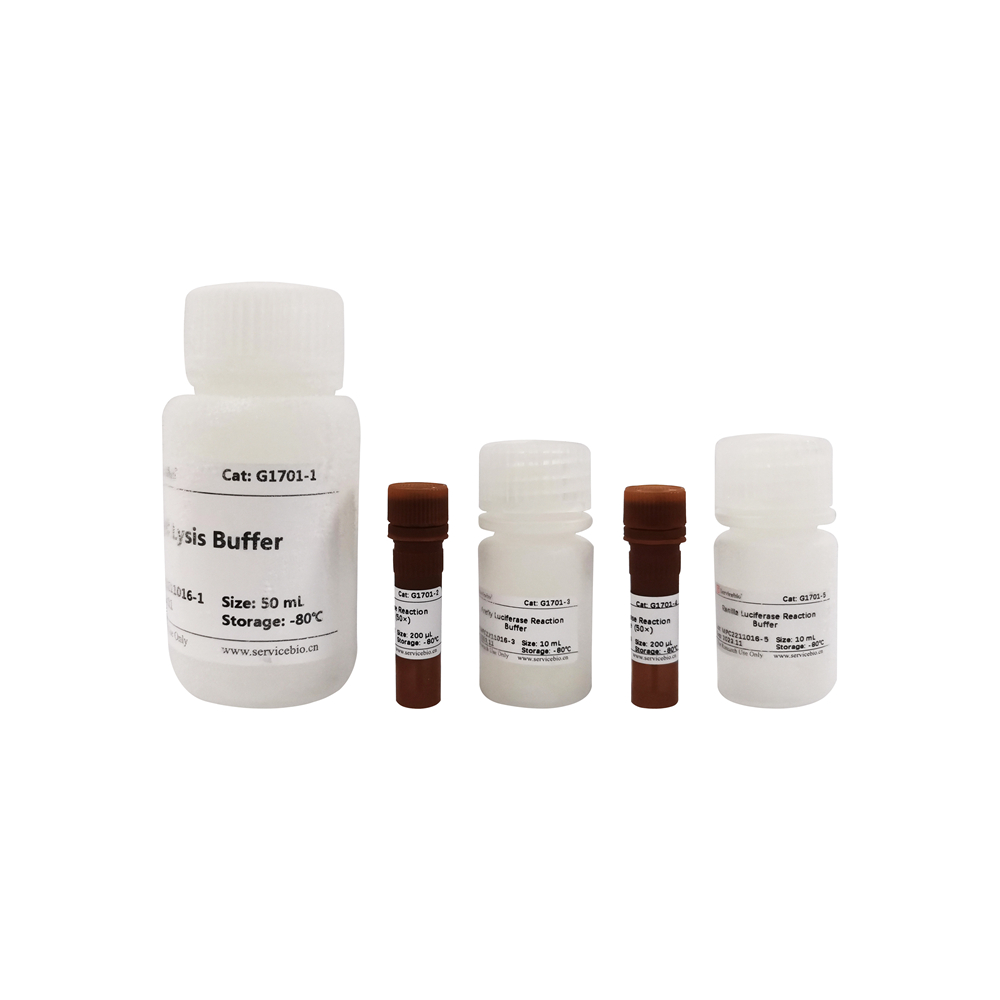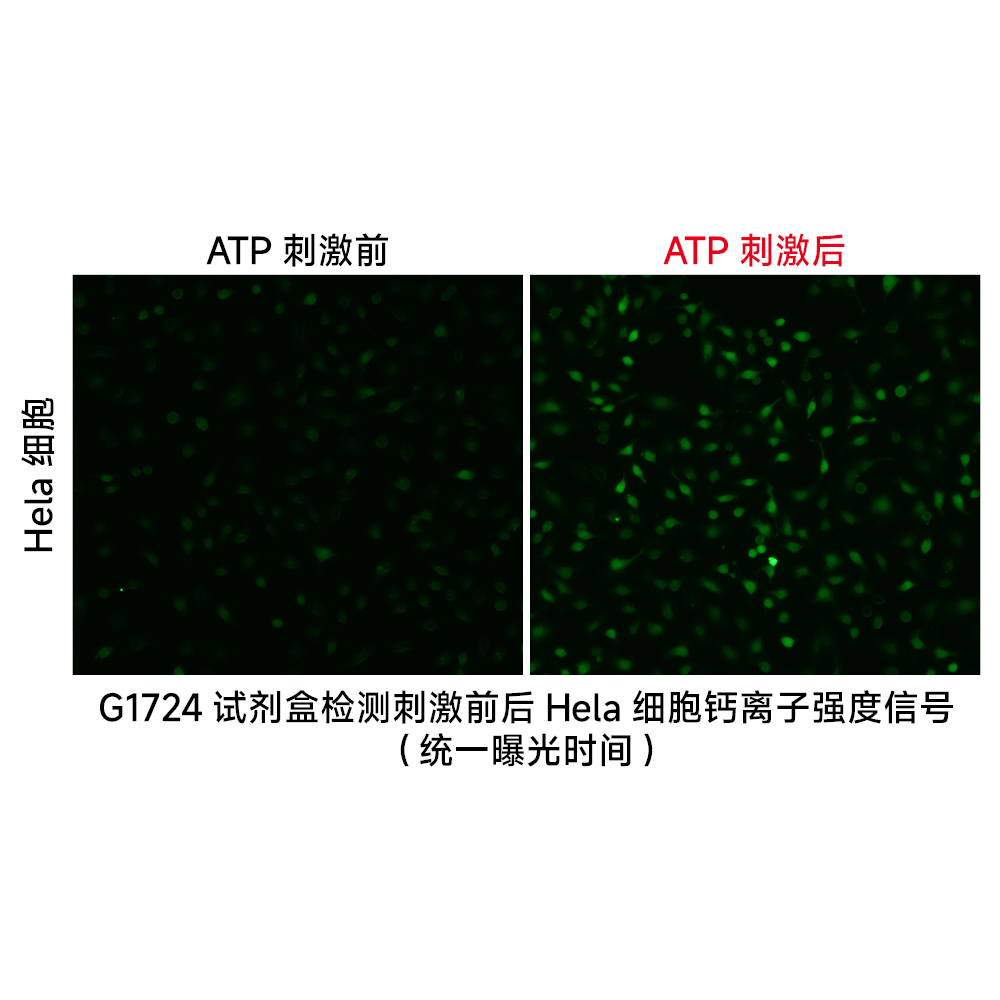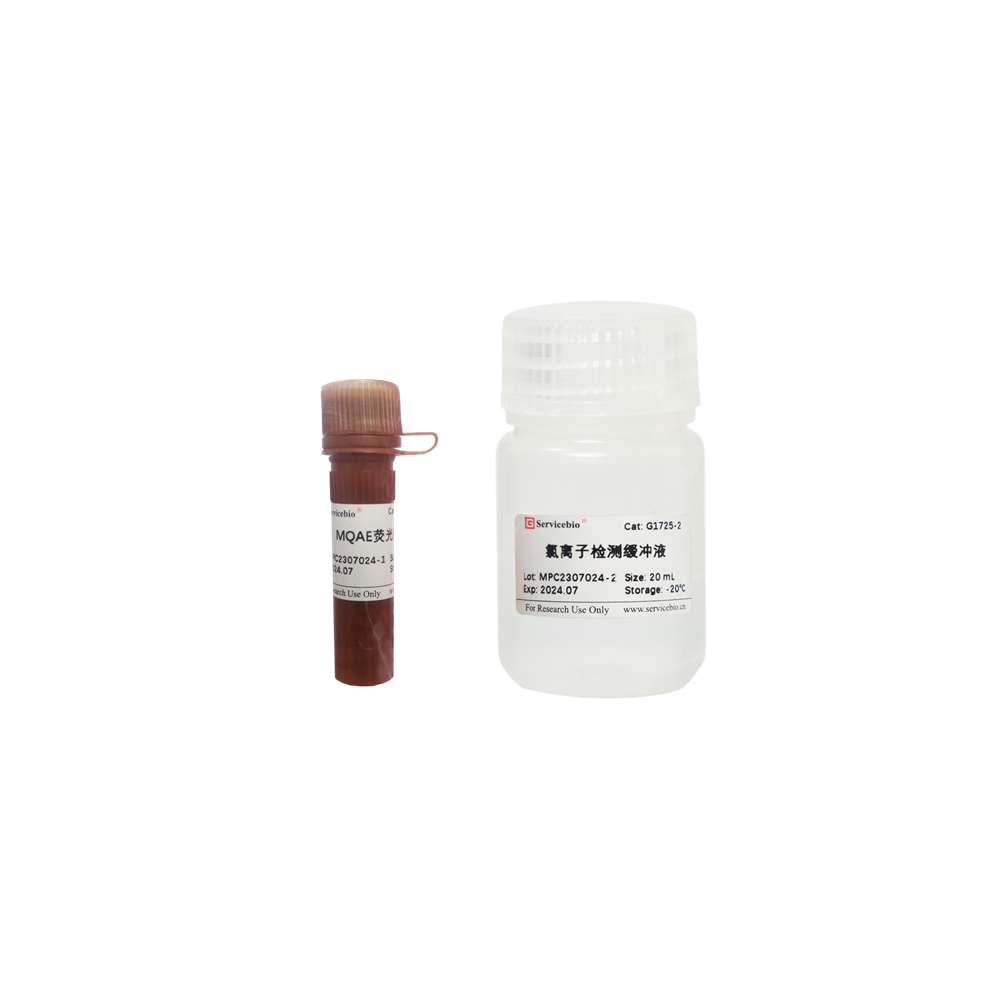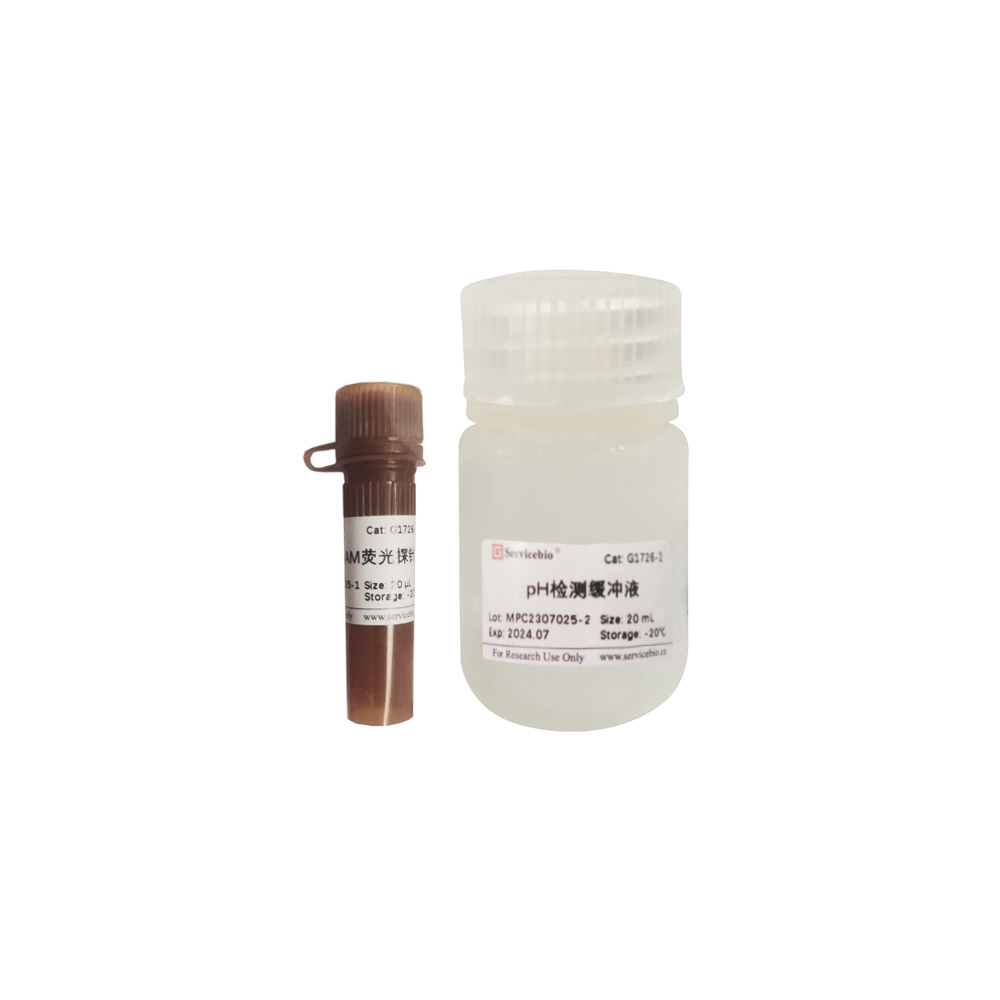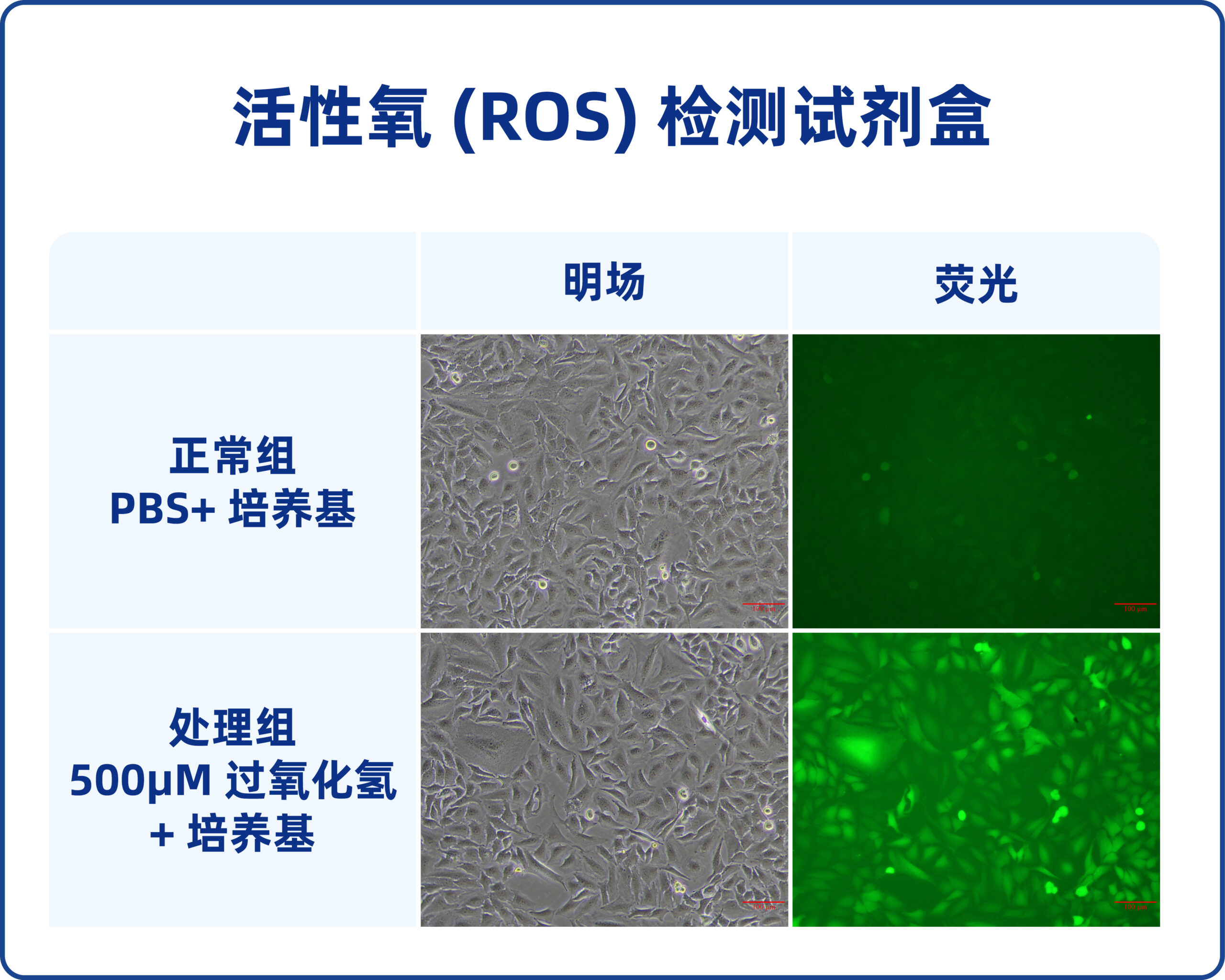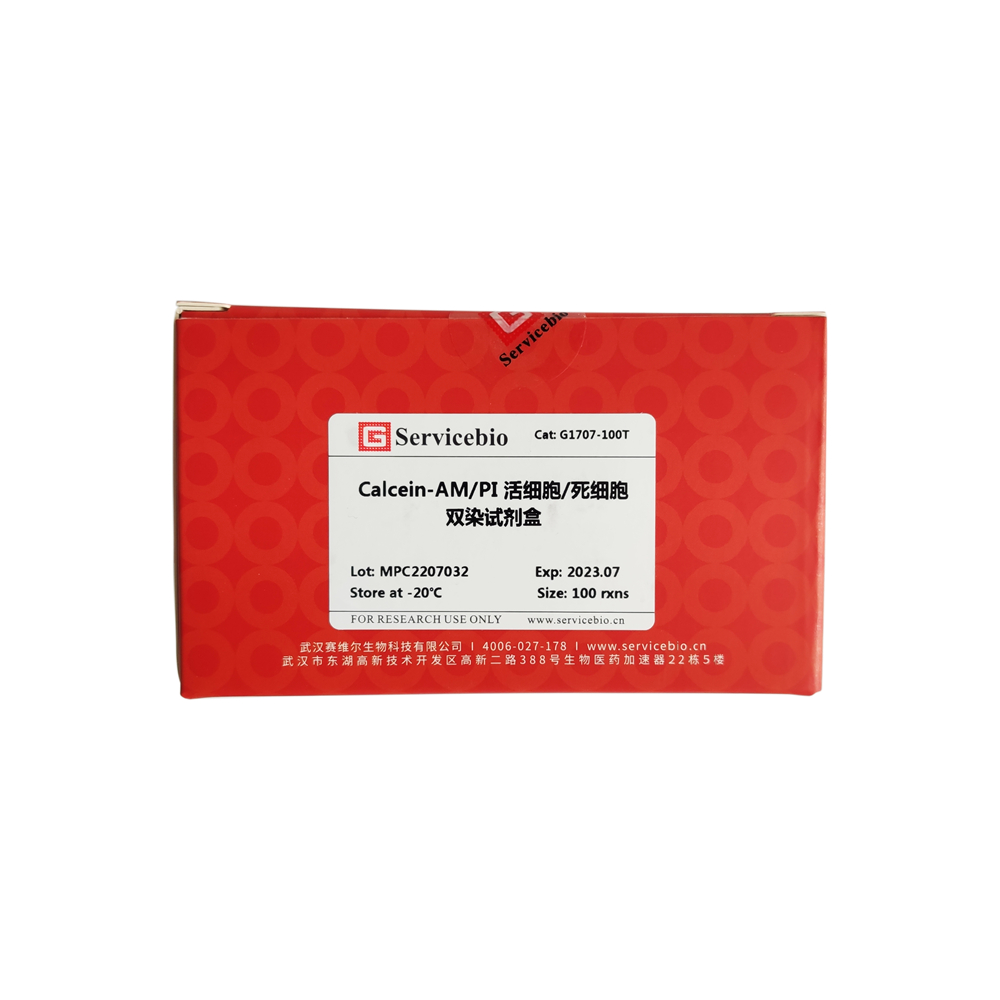Description
Product Information
| Product Name | Cat. No. | Spec. |
| Mono-Lumi Ranilla Luciferase Reporter Gene Assay Kit | G1703-100T | 100T |
Product Description
Luciferase system is mostly used for reporter gene detection. The transcriptional regulatory elements of the target gene are cloned into the upstream and downstream of Luciferase to construct a reporter gene plasmid. The plasmid is then transfected into cells, and after treating the transfected cells with drugs or other stimulants, the cells are collected and lysed, and the luciferase activity in the lysate is measured. The transcription regulation of target genes effect of exogenous stimuli such as drugs is determined by luciferase activity.
Mono-Lumi Ranilla Luciferase Reporter Gene Assay Kit, using Ranilla Luciferase, catalyzes the oxidation of Coelenterazine substrate to Coelenteramide in the presence of oxygen, and generates biofluorescence in the process, The principle that the fluorescence intensity generated is proportional to the luciferin activity can be rapidly detected.
Storage and Shipping Conditions
Ship with dry ice; Store at -80℃ away from light for 12 months; -20 ℃ store away from light, recommended for use within 6 months.
Product Content
| Component Number | Component | G1703-100T |
| G1703-1 | Cell Lysis Buffer | 50 mL |
| G1703-2 | Ranilla Luciferase Reaction Substrate (50×) | 200 μL |
| G1703-3 | Ranilla Luciferase Reaction Buffer | 10 mL |
| Manual | 1 pc | |
Assay Protocol / Procedures
1. Prepare 1× Ranilla Luciferase Reaction working solution:
1.1. The kit is thawed at room temperature, and mixed upside down to ensure that each component is completely dissolved. The Ranilla Luciferase Reaction Substrate (50×) should be thawed on ice and centrifuged briefly to ensure that the reagent sinks to the bottom of the tube;
1.2. The Ranilla Luciferase Reaction Substrate (50×) is diluted 50-fold with Ranilla Luciferase Reaction Buffer, i.e., 10 μL Ranilla Luciferase Reaction Substrate (50×) is mixed with 490 μL Ranilla Luciferase Reaction Buffer to obtain 500 μL of 1× Ranilla Luciferase Reaction working solution;
Note: Prepare according to dosage to avoid waste. 1× Ranilla Luciferase Reaction working solution is recommended to be prepared and used now.
2. Cell pretreatment and lysis:
2.1. Cells are implanted in the corresponding plates, and transfected or other related pre-treatments according to the experimental needs;
2.2. For adherent cells: after removing the original cell culture medium, add the corresponding amount of Cell Lysis Buffer according to the table below to cover the cells;For suspended cells, transfer the cells into a centrifuge tube, centrifuge to remove the medium, and add the corresponding amount of Cell Lysis Buffer to resuspend the cells according to the table below;
| Cell Culture Plate | Cell Lysis Buffer/well |
| 6-well | 500 μL |
| 12-well | 300 μL |
| 24-well | 200 μL |
| 48-well | 150 μL |
| 96-well | 100 μL |
2.3. After sufficient lysis for 10-20 min at room temperature, cells are scraped and collected in a 1.5 mL centrifuge tube, centrifuged at 4°C, 12000 g for 10 min, and the supernatant (cell lysate) is retained for spare use;
3. Ranilla Luciferase detection:
3.1. 1× Ranilla Luciferase Reaction working solution prepared in advance is restored to room temperature and added to an opaque white 96-well plate at 100 μL/well;
3.2. The cell lysis supernatant retained in step 2 is added to the above 96-well plate at 20 μL/well;
3.3. The horizontal oscillation is uniform, and the chemiluminescence detection is performed immediately with the Luminometer, the multifunctional enzyme label with the chemiluminescence detection module or other instruments capable of detecting bioluminescence,
Note
1. Before detection, the 1× Ranilla Luciferase Reaction working solution needs to be restored to room temperature before use.
2. Ranilla Luciferase Reaction Buffer has some precipitation after thawing, which is a normal phenomenon, and it should be shaken well before use to ensure that it is completely dissolved.
3. When conducting multi-sample detection, the addition of 1× Ranilla Luciferase Reaction working solution should be controlled within a short period of time as far as possible, It is recommended to use multichannel pipette for sample addition and pay attention to whether the suction volume of each well of the pipette is consistent.
4. In order to prevent interference between wells, the use of opaque white well plates is recommended. Opaque black plates can also be used, but black will absorb the fluorescence signal and reduce the fluorescence signal detected.
5. For your health and safety, please wear lab coat and gloves during operation.
For Research Use Only!
|
Cat.No.
|
Product Name
|
Spec.
|
Operation
|
|---|
|
G1701-100T
|
Dual-Lumi Dual-Luciferase Reporter Gene Assay Kit
|
100 T
|
|
|
G1702-100T
|
Mono-Lumi Firefly Luciferase Reporter Gene Assay Kit
|
100 T
|
|
|
G1703-100T
|
Mono-Lumi Ranilla Luciferase Reporter Gene Assay Kit
|
100 T
|
|
|
G1706-100T
|
Reactive Oxygen Species (ROS) Assay Kit
|
100 T
|

